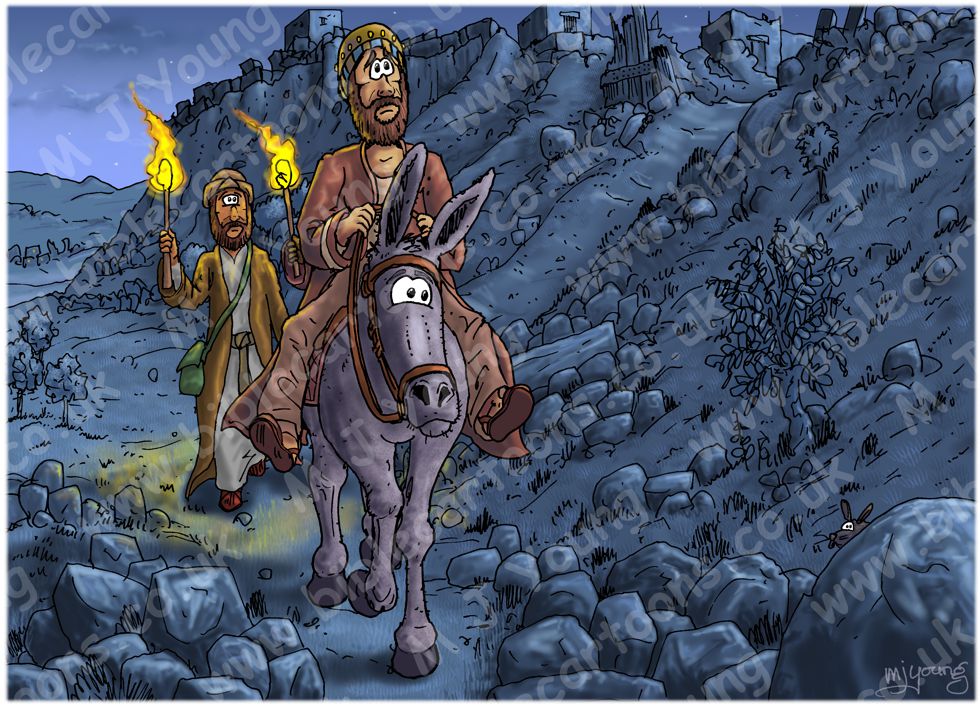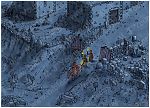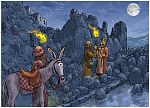Bible Cartoon: Nehemiah 02 - Nehemiah inspects Jerusalem's walls - Scene 03 - Inspection
Click on Add to cart button below shopping cart.
Purchased Bible Cartoons do not have watermarks. Links to Cartoons provided on email once purchase is completed.Bible Book: Nehemiah
Bible Book Code: 1600201302
Scene no: 3 of 6
Bible Reference & Cartoon Description
Nehemiah 2:13b (ANIV)
13b [By night I went out through the Valley Gate] …towards the Jackal Well and the Dung Gate, examining the walls of Jerusalem, which had been broken down, and its gates, which had been destroyed by fire.
DRAWING NOTES:
TIME OF DAY:
Verse 12 tells us Nehemiah went out at night.
LIGHTING NOTES:
There are two sources of light in this scene. The first is the full moon (unseen, to the right of the viewer) which gives a cool, blue hue to the landscape. The second is a warm, yellow/orange light coming from the two torches Nehemiah’s companions are carrying.
CHARACTERS PRESENT:
Nehemiah is riding his donkey towards the Jacel Well and Dung Gate. Behind him are his two un-named companions.
RESEARCH/ADDITIONAL NOTES:
This picture shows Nehemaiah riding his donkey in the Hinnom valley, west of the broken walls of Jersalem. He is looking up at the walls taking careful note of their damaged condition. Following Nehemiah are the two torch carrying companions I drew in previous scenes.
In this scene we can see that Nehemiah has retained his Persian trousers, which would make riding a donkey very much easier! The rest of his attire is the more usual Hebrew clothing I depict: a long outer robe, long inner robe and leather sandals.
I have used the same blue hues and tones which I used for the landscape in the previous pictures, to create conformity between the various scenes.
Notice the small rabbit, peeking out behind the large bolder in the right foreground.
Here’s the scene without the figures or donkey included.
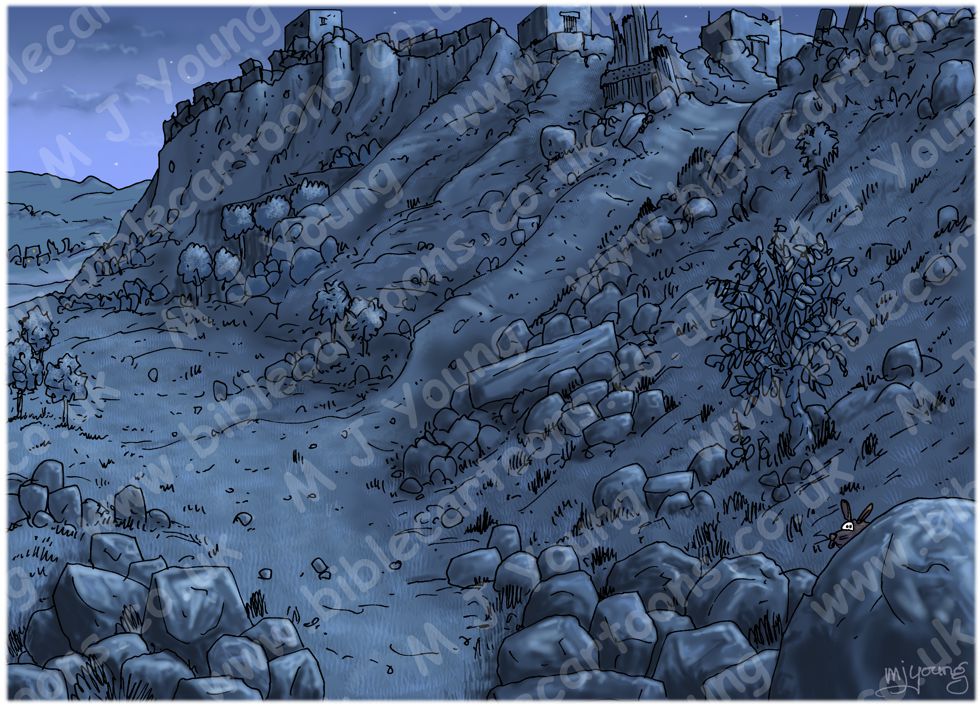
Background of Nehemiah 02 – Nehemiah inspects Jerusalem’s walls – Scene 03 – Inspection
Click on the colour bar below to view/buy this Background:
Background of Nehemiah 02 – Nehemiah Jerusalem’s walls – Scene 03 – Inspection
Here’s the rough pencil sketch I drew for this scene.
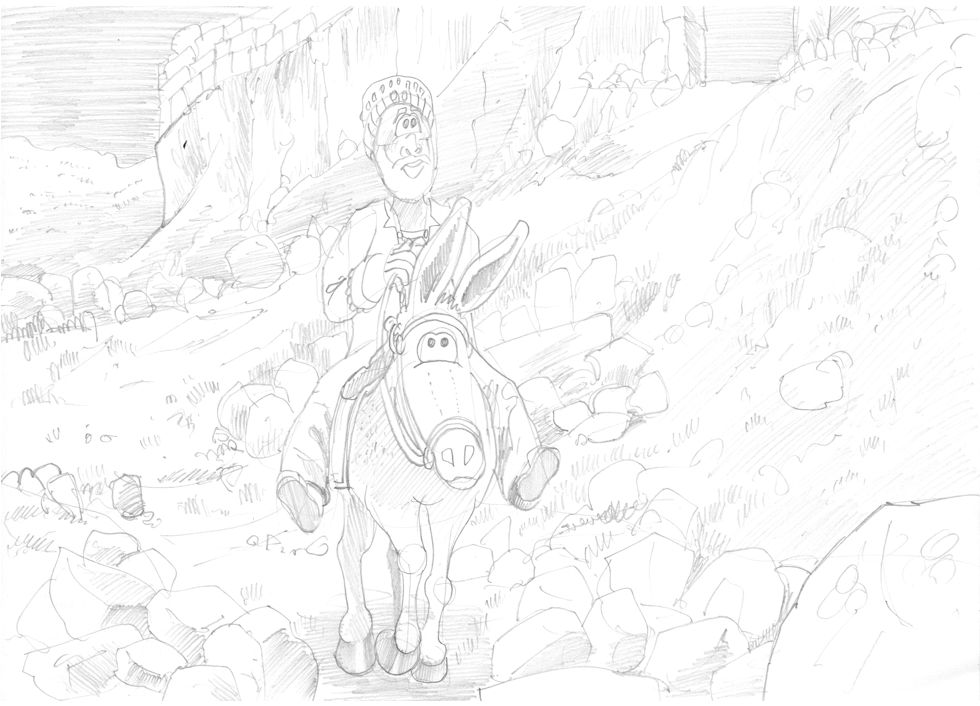
Nehemiah 02 – Nehemiah inspects Jerusalem’s walls – Scene 03 – Inspection
Notice that I didn’t include Nehemiah’s torch-carrying companions in the rough sketch, but decided to add them into the final scene.
The Jackal Well and Dung Gate.
Although the Jackal Well (called the Dragon’s Well in the KJV) is mentioned in verse 13b above of Nehemiah’s account of his noctural inspection of the walls of Jerusalem, no-one knows the location of this mysterious well today. It may have been a spring emanating from the bottom of the Hinnom valley. It is at least as likely that it received its name from the jackals which haunted this valley, as the pariah dogs do today, to consume the dead bodies which were thrown there.
The Dung Gate is also called the Gate of Silwan and the Mograbi Gate, which was a small exit in the walls, in the south of the city of Jerusalem. The gate is first mentioned in the Book of Nehemiah, although that Dung Gate was south of the one that exists today. The earlier gate served as a dispatch point for the city’s garbage, hence its name; it was merely a small break in the wall for pedestrians, but after the Ottaman rule a gatehouse was built outside the wall.
